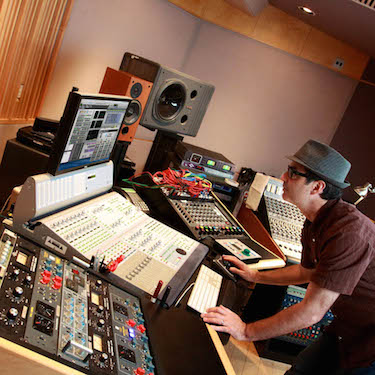|

If mix engineers had the same cultural currency as sports heroes, Tony Maserati would be a household name the world over. The veteran mix engineer has worked with all of the music industry’s biggest and brightest stars, from Lady Gaga to Notorious B.I.G., from Mariah Carey to Puff Daddy, and from Christina Aguilera to R. Kelly. Recently he completed three weeks of mixing for Beyoncé’s self-titled “surprise” release. Maserati is the sound of major label pop, and the in-demand engineer maintains an outrageous schedule that would make your eyes bleary just to hear it. Obviously, Maserati will not suffer anything less than the very best in pro audio equipment for his sessions, both in terms of sound quality and performance, which is why he relies on Metric Halo ChannelStrip, HaloVerb, and Multiband Dynamics plug-ins. Maserati likes their stellar sound quality, easy and quick interfaces, and rock solid performance.
“The sound quality of Metric Halo’s classic plug-in, ChannelStrip, is what first caught my attention and made me aware of the company,” Maserati said. “I often see ChannelStrip on the sessions I get handed; in fact, several of Beyoncé’s tracks came in with it. ChannelStrip is still my go-to plug-in for routine and extreme equalization and dynamics. There’s something psychologically appealing about having six EQ bands at the ready, and the presets get me where I need to be quickly.”
The quality of a plug-in’s interface is very important to Maserati because he has to move fast. “I don’t have the time or patience to sit around and figure things out,” he said. “Metric Halo’s GUIs are intuitive to understand, and the automation is simple and easy to work with. HaloVerb is a good example of a plug-in that sounds great and is easy to dig into with great results.” While paying careful attention to the density of his reverb plug-ins and outboard gear, including the delicacy of the tail, Maserati’s busy schedule also demands a very functional interface. He has used HaloVerb on guitars, vocals, and percussion to great effect. One of his new tricks is to run a dry signal through HaloVerb and then send HaloVerb’s output into a distortion box. “The stress of that sound is really interesting to me,” he said. “Sometimes I’ll automate the send so that I get that stress only on certain notes. It’s great.”
Maserati also has to pay careful attention to the load he puts on his Pro Tools system. “Pop sessions get really gigantic,” he said. “They come in with a lot of plug-ins, I add a lot of plug-ins, and I’m also using 32 hardware inserts and two print tracks; one that’s maximized and one that’s not. It’s not just a storage system, and it’s not just an automation system. I’m taxing it, and a lot of math is happening!” These days, he’s using an HD native card, and the fact that all of Metric Halo’s plug-ins are AAX works well. “My plug-ins have to be totally solid,” he said. “The code has to be well-written; if something’s broken, I just won’t go near it. Metric Halo has a long history of solid performance that uses surprisingly little DSP resources. A testament to Metric Halo’s stability is the fact that I’m now using Metric Halo’s Multiband Dynamics plug-in on my mix bus. That’s unusual for me, and I wouldn’t do that if I wasn’t completely confident.” |